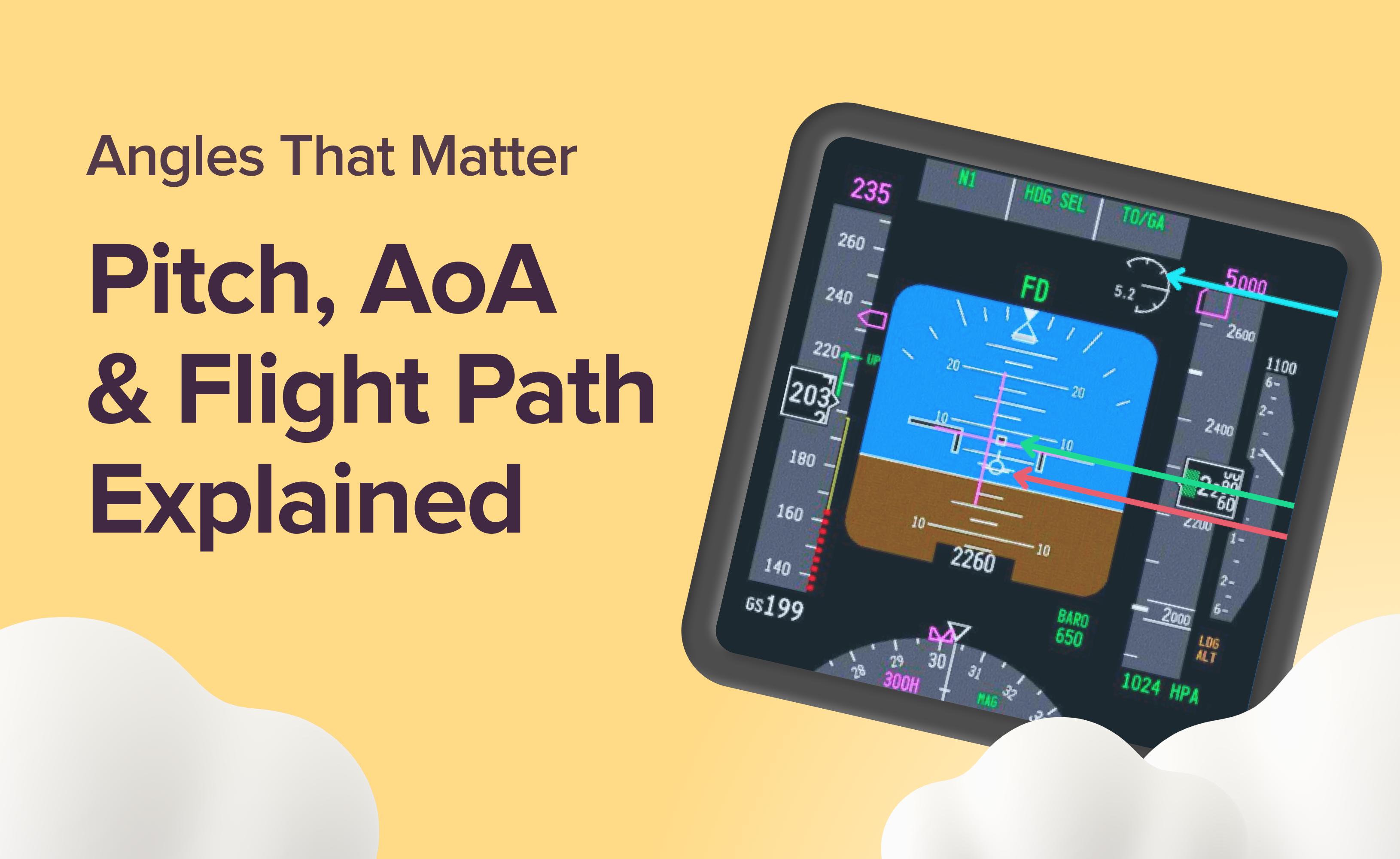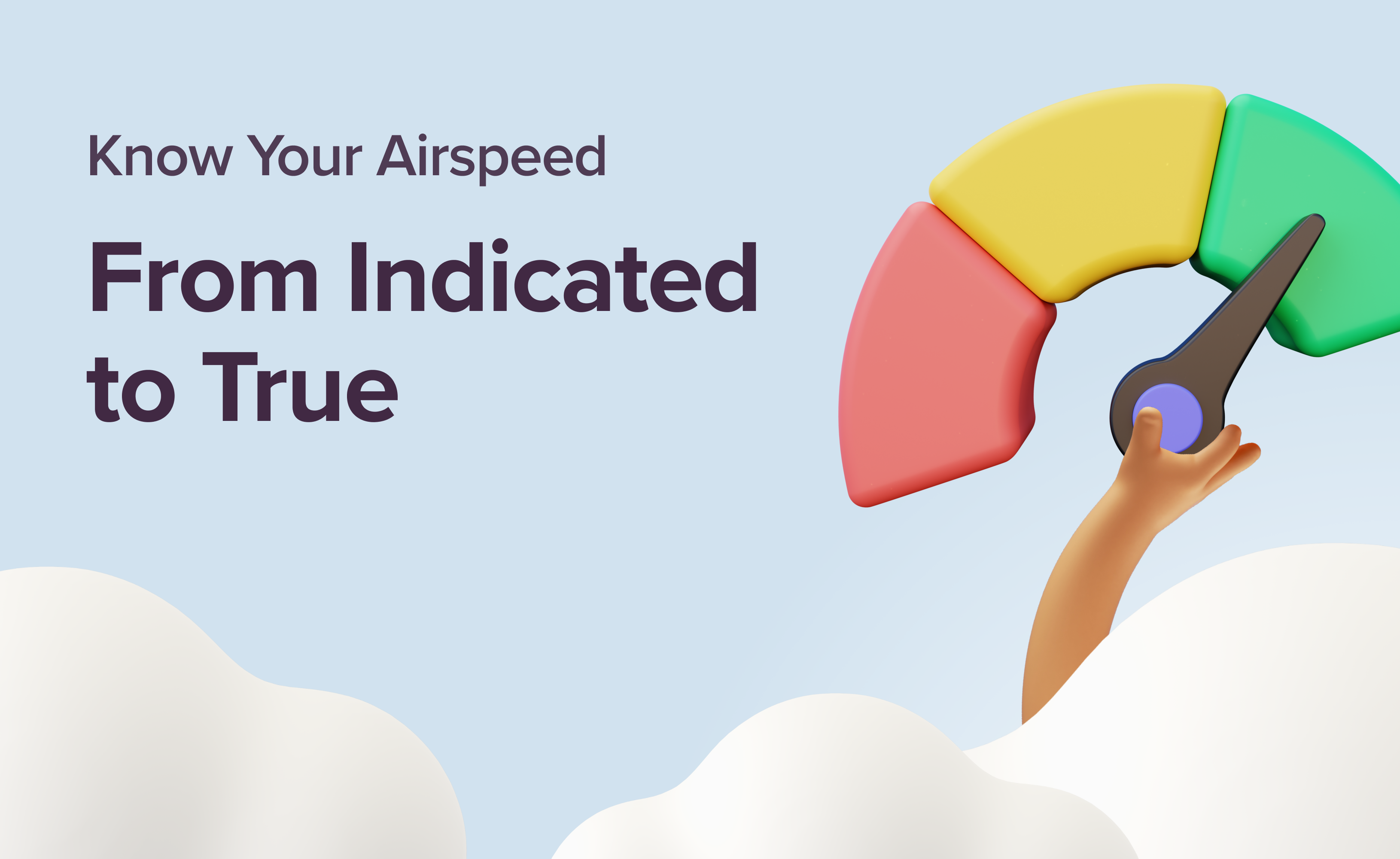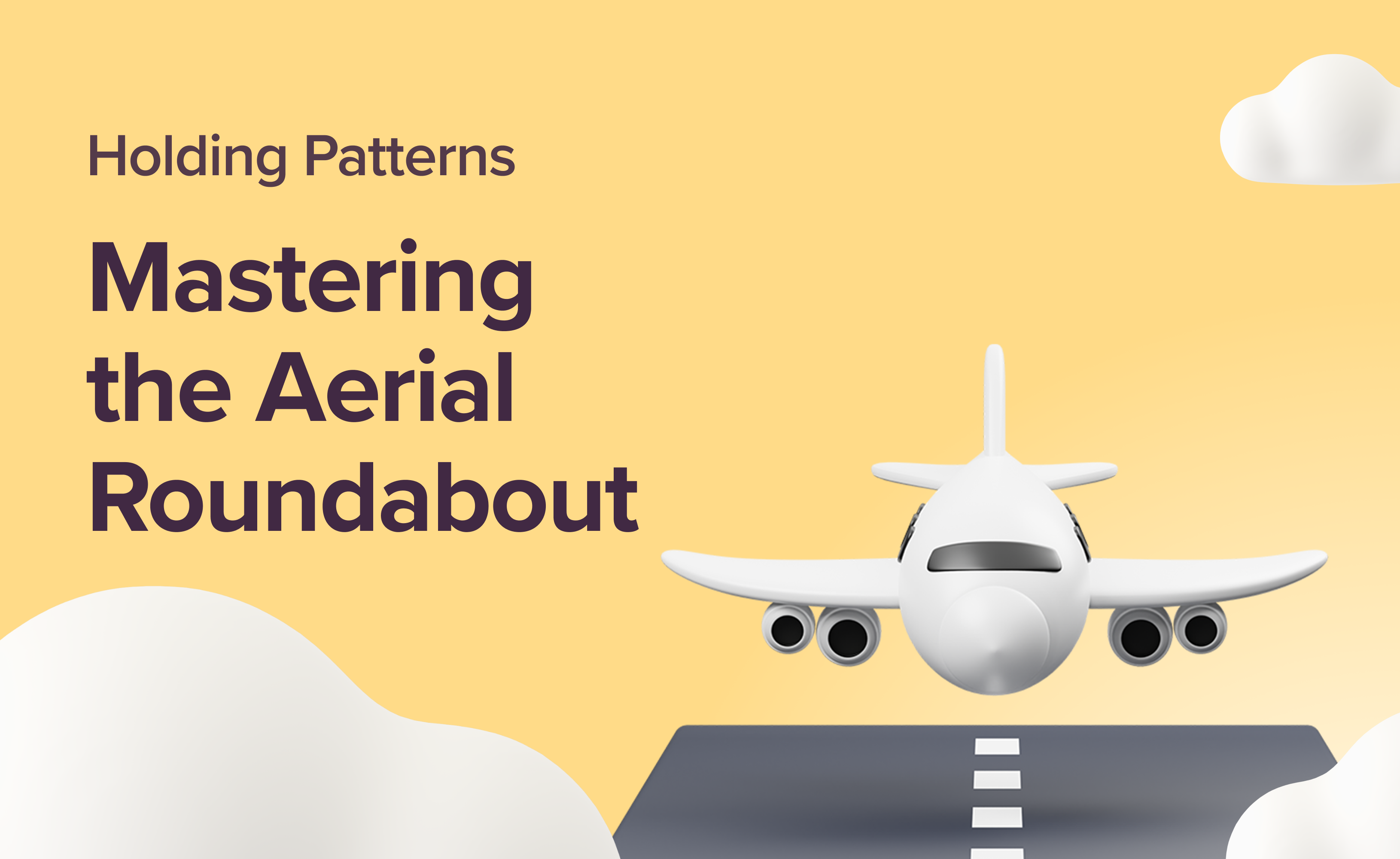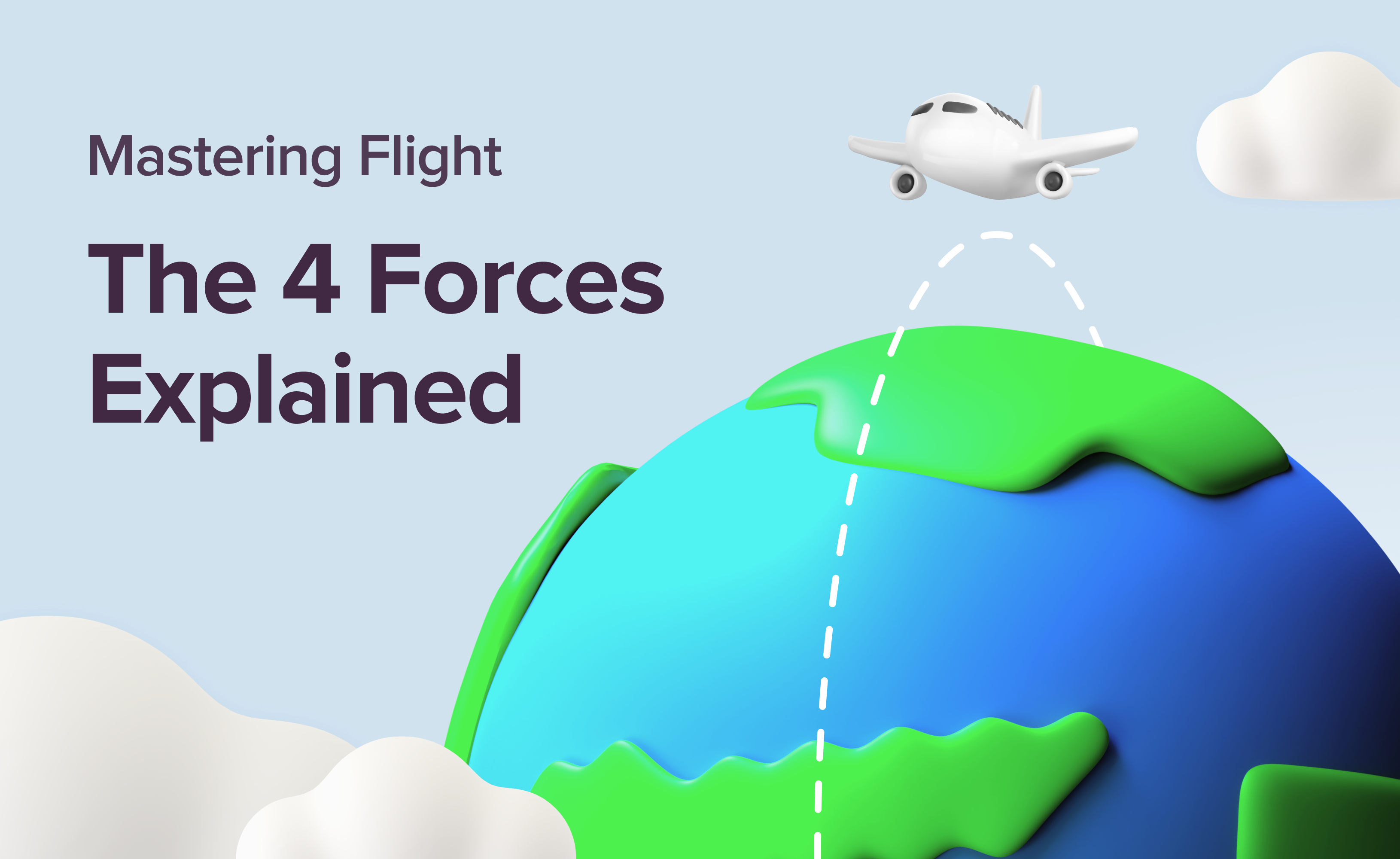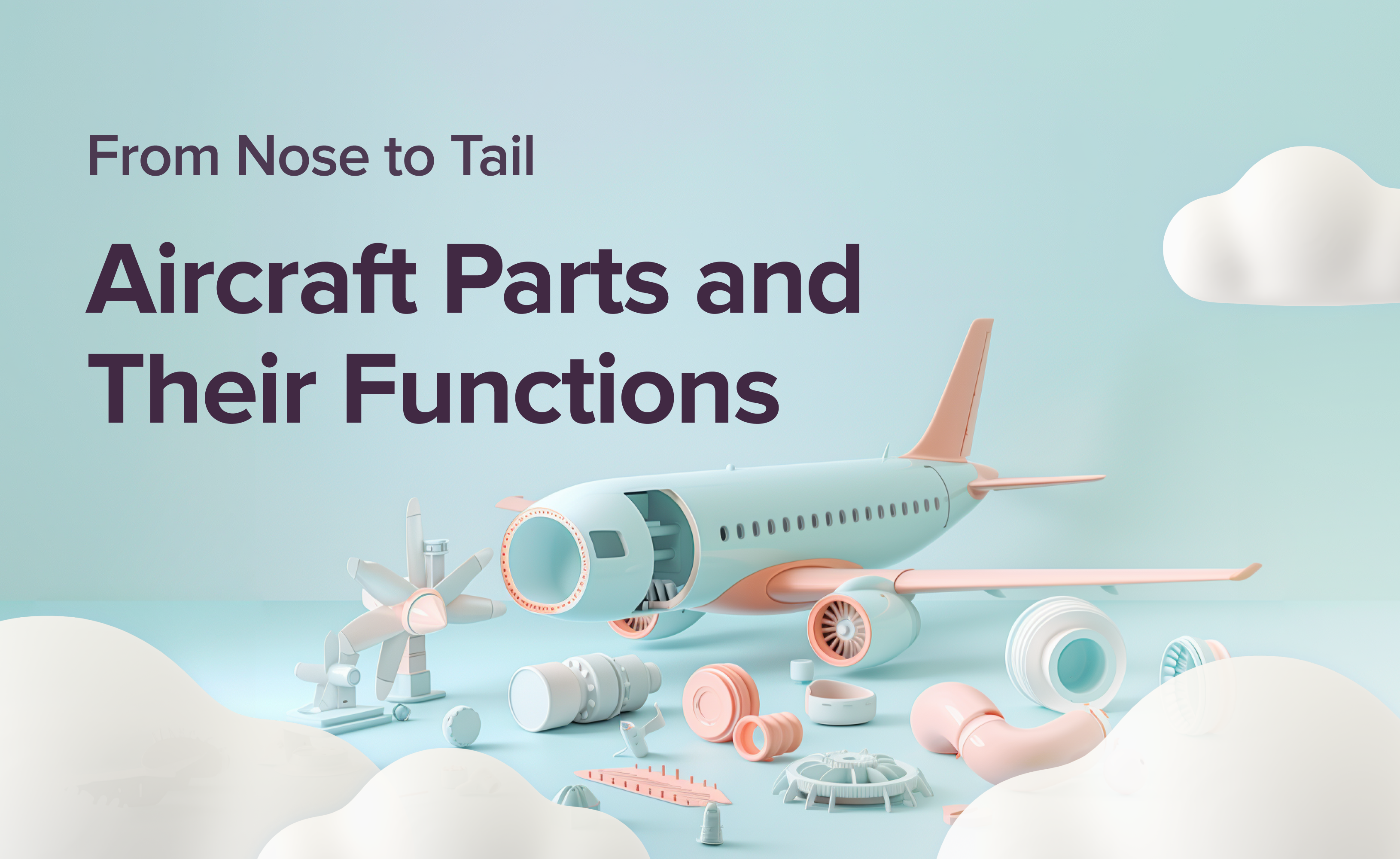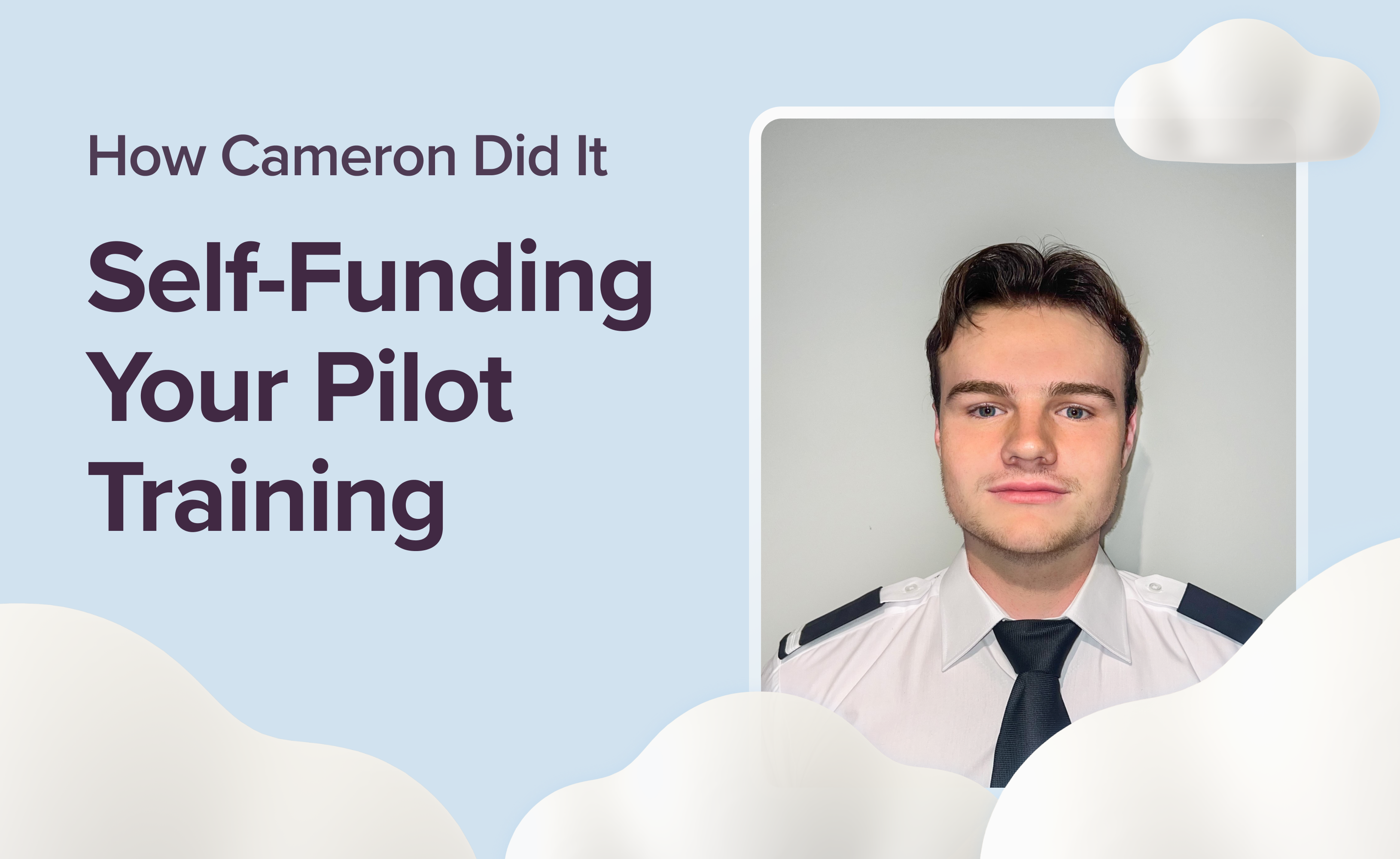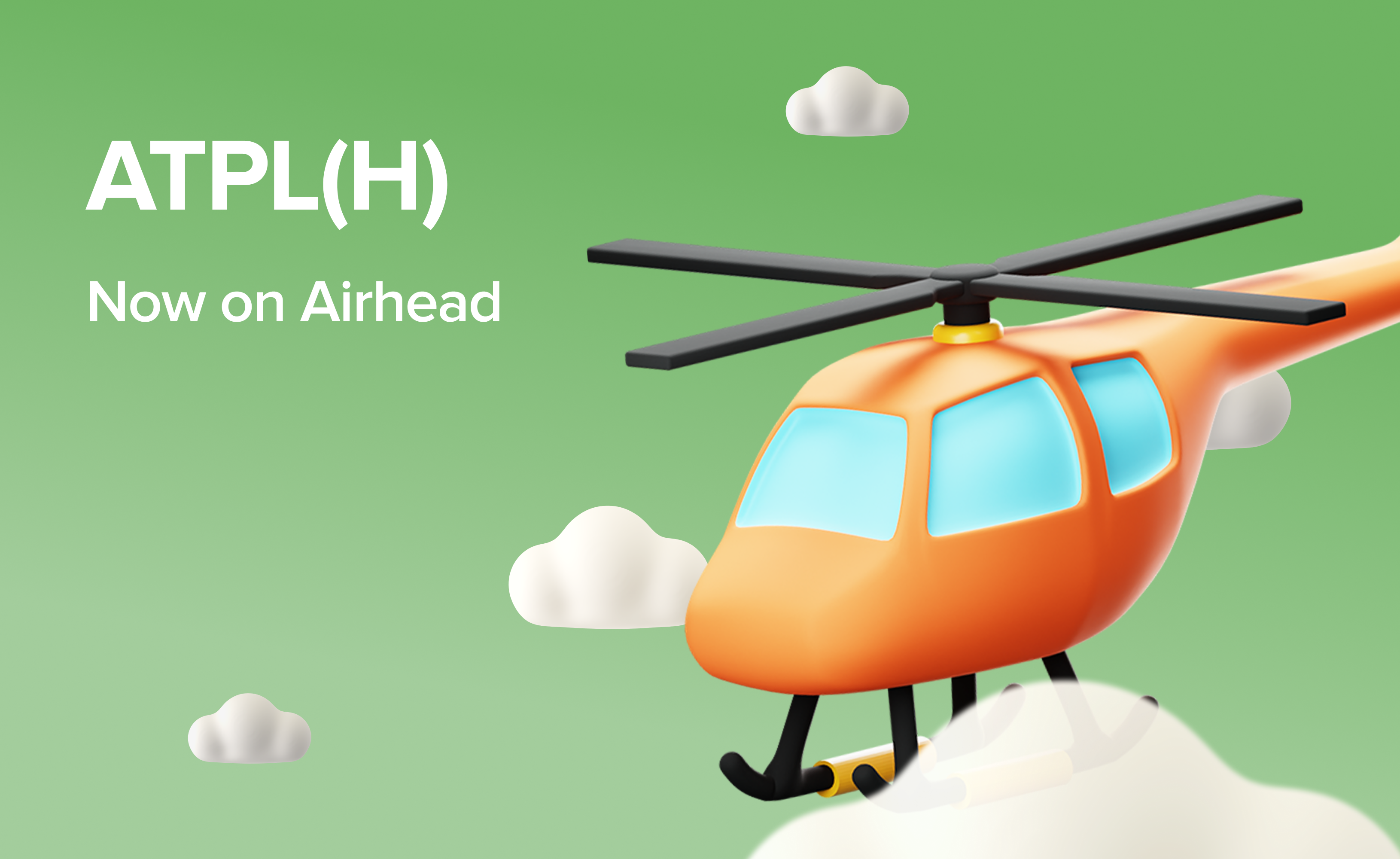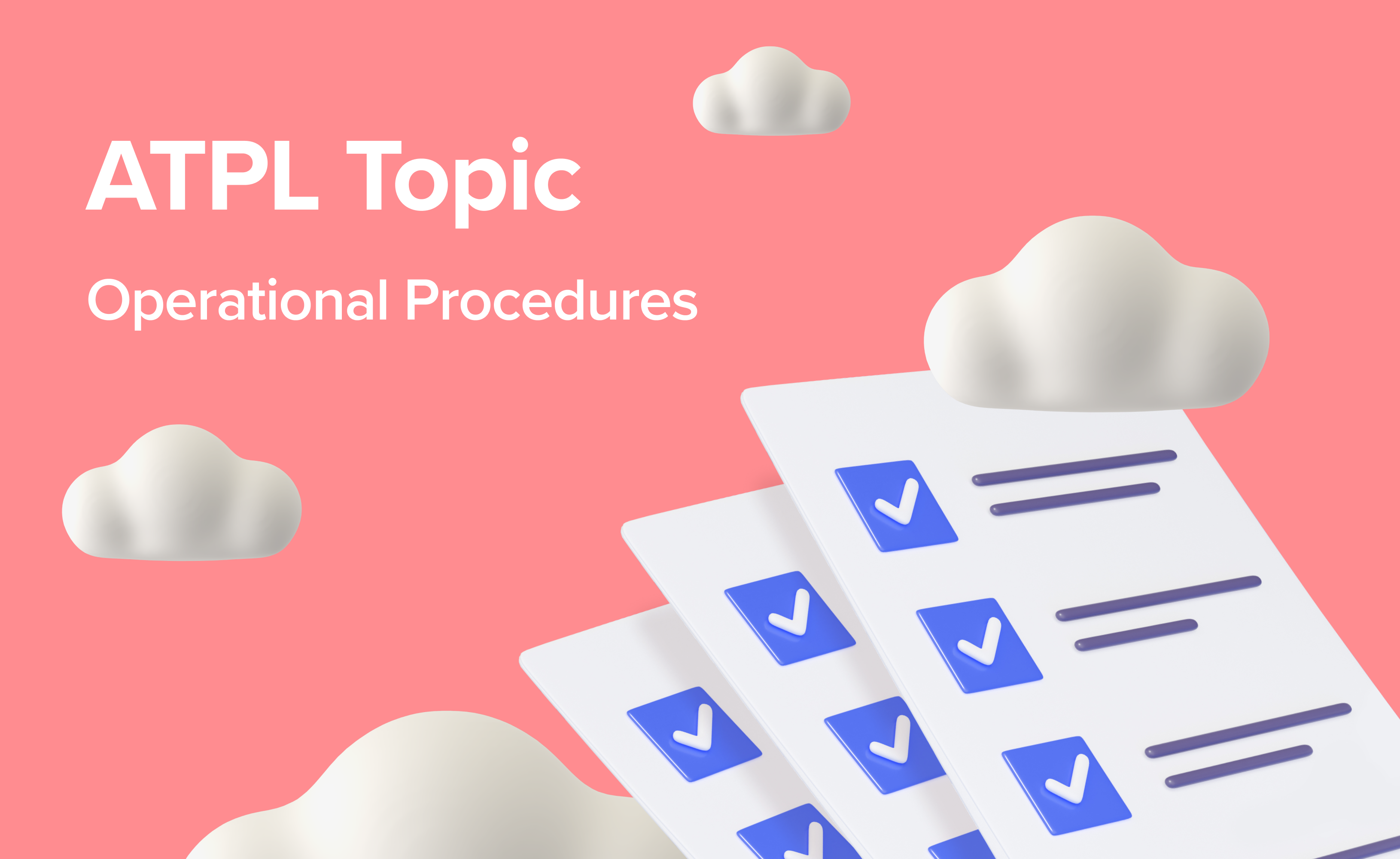Pilot Etiquette: Unwritten Rules of the Skies

Formal regulations are the backbone of aviation safety, establishing clear guidelines for everything from take-off procedures to airspace limitations. However, there exists another layer of understanding that promotes smooth operation and fosters a respectful environment among pilots. This article explores the unwritten rules in aviation, also known as pilot etiquette.
What is Pilot Etiquette and How It Works
Pilot etiquette refers to the set of unspoken rules and professional behaviours that pilots follow to maintain safety, efficiency, and harmony in aviation. It encompasses respect for air traffic controllers, courteous communication with other pilots, and adherence to protocols on the ground and in the air. The specific unwritten rules may vary depending on the airline, aircraft type, and individual crew dynamics. However, the core principle remains the same: fostering a safe, efficient, and collaborative environment in the cockpit. They encompass practices like clear and concise communication during radio exchanges, predictable manoeuvres that cut down on the risk of mid-air collisions, and maintaining a sharp lookout for other aircraft, especially in busy airspace.
Core Principles of Pilot Etiquette
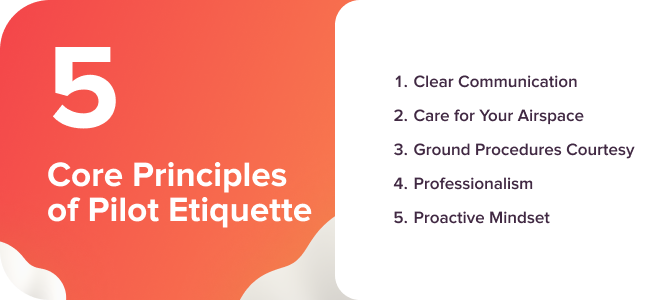
Pilot etiquette is more than just a nice thing to do. These unwritten rules, though not explicitly documented, are crucial for maintaining order in the skies. It's the foundation of a safe and efficient aviation industry. By following these unspoken standards of engagement, pilots work as a team to ensure a smooth and successful journey for everyone on board.
Clear Communication
Clear and concise communication with air traffic control is vital. Pilots speak the universal language of aviation, ensuring everyone is on the same page. Promptly acknowledging instructions from ATC and reading back crucial details like altitude and headings eliminates ambiguity and keeps the flow of traffic moving smoothly.
ATCs also strive to convey their expectations to pilots, even in situations outside their controlled airspace. This proactive communication can help prevent misunderstandings and ensure a smooth flow of traffic. Imagine driving on a highway where everyone understands the same road signs – that's the power of clear communication in the skies.
Explore the key Communication topics covered in the ATPL syllabus here.

Care for Your Airspace
The vast expanse of the sky is meticulously divided into designated airspaces, just like highways have lanes for different speeds. Pilots must respect particular airspaces, maintaining appropriate distances and altitudes to avoid conflicts. Being at a safe distance from other aircraft and adhering to these invisible boundaries is paramount. By following these “air traffic lanes,” pilots prevent dangerous close calls and ensure everyone reaches their destination safely.
Ground Procedures Courtesy
Taxiing on the ground at an airport can be like navigating a busy intersection. Courteous behaviour, like taking turns and avoiding unnecessary delays, ensures everyone gets to their take-off point efficiently. So you, as a future pilot, should collaborate to cut down congestion and frustration. Delays on the ground can ripple through flight schedules, so a smooth taxiing process is essential for maintaining on-time departures.
Professionalism
A pilot's demeanour sets the tone for the entire flight. Just like a doctor's calm and confident presence reassures patients, a pilot's professionalism inspires trust in both passengers and crew. Being punctual, properly attired, and demonstrating a thorough understanding of procedures fosters a sense of safety and preparedness. Professionalism ensures everyone feels confident and focused on the task at hand.
Proactive mindset
Pilots themselves contribute significantly to a safe and harmonious flying environment by adopting a proactive mindset that promotes safety and clear communication. This means being prepared to adapt one's flight plans, especially near busy airports, and keeping ATC informed of their intentions even when operating outside controlled airspace.
The consequences of disregarding pilot etiquette can be significant. Miscommunication can lead to confusion and near misses. Disregarding airspace restrictions risks collisions. And unprofessional behaviour can deplete trust and create a tense atmosphere in the cockpit, potentially impacting decision-making and flight safety.
Why It Matters for Student Pilots
Mastering the art of pilot etiquette is far more than simply learning a set of unspoken rules. It's about becoming a responsible and professional member of the aviation community. By embracing these principles from the very beginning, student pilots pave the way for a safe, efficient, and rewarding journey through the pilot career.
Here's why understanding and adhering to pilot etiquette becomes crucial from the very first lesson:
Safety. Adhering to pilot etiquette minimizes the risk of accidents and misunderstandings, fostering a safer flying environment.
Learning Foundation. Developing good habits early prepares student pilots for professional aviation careers.
Reputation. Demonstrating proper etiquette helps build a positive reputation among peers and instructors, which can be crucial for future opportunities.
Efficiency. Effective etiquette ensures smoother operations and better coordination with ATC and other pilots, enhancing overall flight efficiency.
So, the next time you step into the cockpit, remember – you're not just learning to fly a plane; you're figuring out the basics of a communication style that fosters safety, builds trust, and propels you towards a successful aviation career.
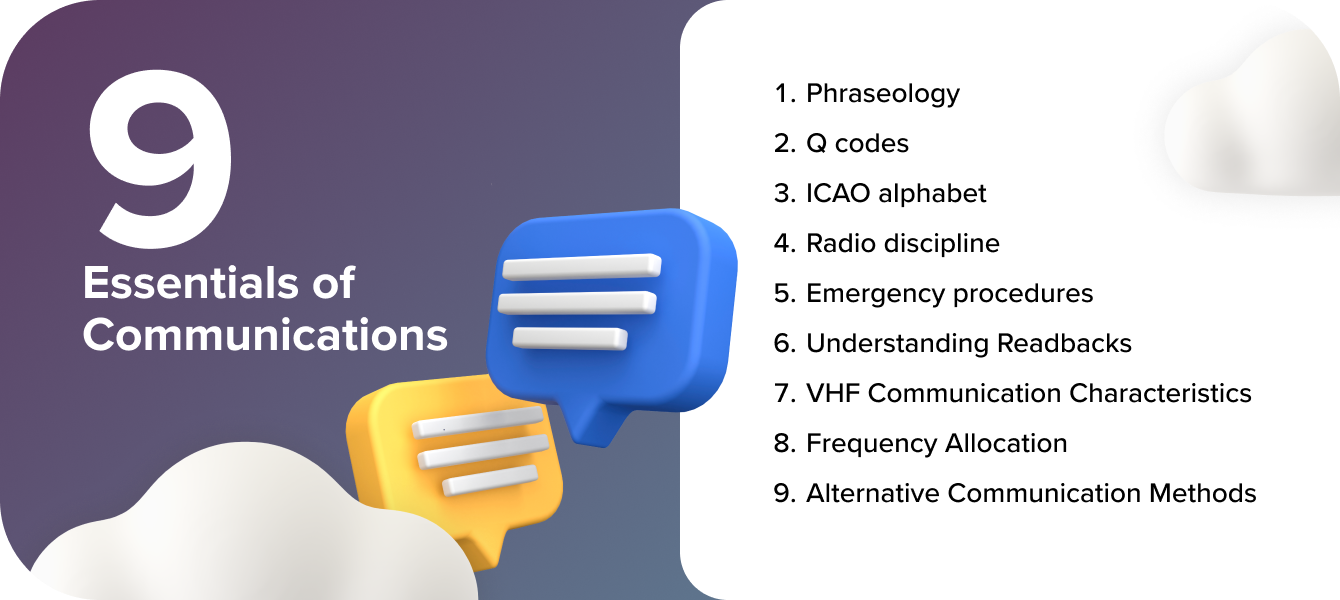
Examples of Pilot Etiquette Rules
While there are plenty of written regulations that govern pilot behaviour, unwritten rules also play a big role in creating a smooth and safe flying experience. Here are some of the key unwritten rules inside the cockpit.
These are just a few examples, and the specific unwritten rules may vary depending on the airline, aircraft type, and individual crew dynamics.
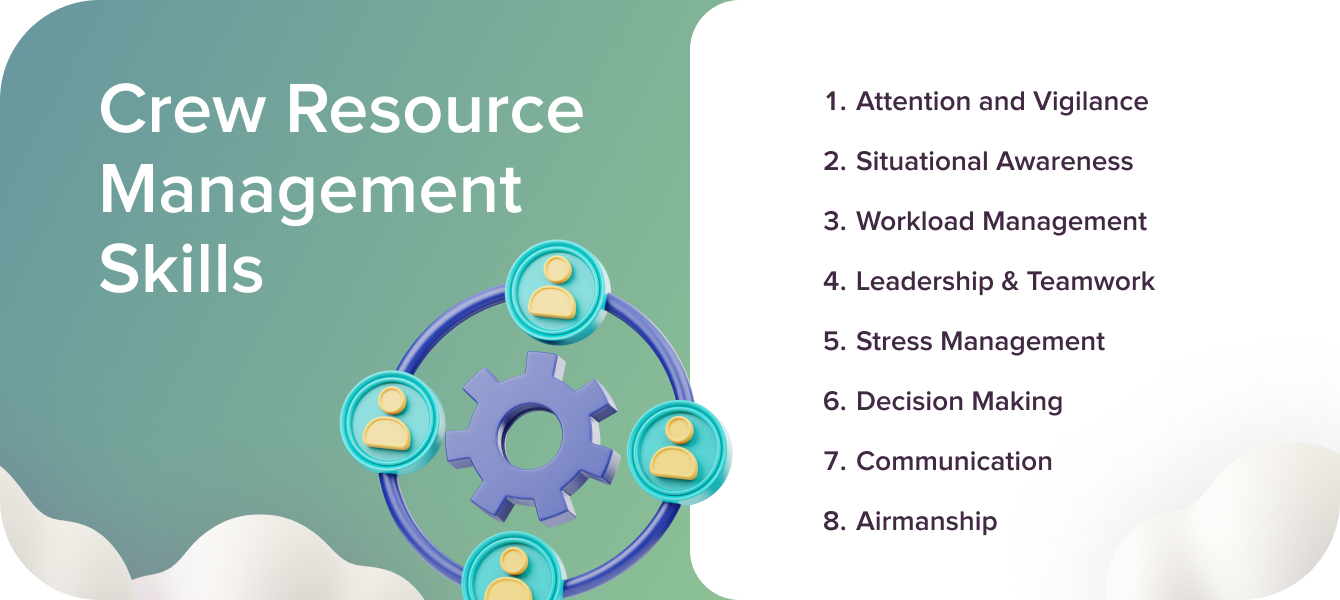
Crew Resource Management (CRM)
This is a broad principle that points to teamwork, clear communication, and mutual respect between pilots. It means listening to each other's concerns, offering suggestions, and ultimately deferring to the pilot in command (PIC) when a decision needs to be made.
Maintaining Situational Awareness
Both pilots are expected to be constantly aware of their surroundings, including the aircraft's position, weather conditions, and potential conflicts with other aircraft. They should brief each other on important information and be prepared to take over the controls if necessary.
Sterile Cockpit Rule
This rule essentially means avoiding non-essential conversations and distractions during critical phases of flight, such as take-off and landing. This policy means that any general chit-chat is only permitted during cruise control. Below 10,000 feet, the conversation is directly related to the flight.
“Go-Around Etiquette”
If a pilot decides to abort a landing and initiate a go-around, it's expected to be done calmly and professionally. There's no need to assign blame or dwell on the missed approach. The other pilot should be supportive and assist with the go-around procedure.
“Head's Up” Calls
If a pilot sees something of potential concern, they'll call it out with a simple “heads up” followed by a description of the issue. This helps the other pilot be aware and prepared to react if needed.
Maintaining Professionalism
Even in stressful situations, pilots are expected to remain calm and collected. They should avoid outbursts of anger or frustration and prioritize clear communication to ensure a safe outcome.
Sharing the workload
Pilots should work together to distribute tasks efficiently, reducing workload on each other during long flights. This can involve sharing tasks like monitoring instruments, filling out paperwork, or communicating with air traffic control.
Crew Resource Management (CRM) is a crucial element within the Human Performance and Limitations (HPL) subject of your ATPL training. Ready to learn more? Discover the key areas covered under HPL from our guide.
Golden Rules From The Cockpit

Here are 6 golden rules that will guide you not just in the cockpit, but also throughout your life's journey.
1. Aviate, Navigate, Communicate
This core principle focuses on the hierarchy of actions in flight. In any situation, focus on maintaining control of the aircraft (aviate) first. Once stable, navigate to safety. Finally, communicate the situation to air traffic control. This ensures you don't get overwhelmed and compromise safety during emergencies.
2. Always Have an "Out"
Just like pilots plan alternate routes and carry extra fuel, be prepared for life's detours. Develop backup plans, cultivate resilience, and identify potential solutions before problems arise. This proactive approach empowers you to navigate any unexpected situation .
3. Fuel Your Body and Mind for Peak Performance
Don't underestimate the power of healthy eating, getting enough sleep, and managing stress. Imagine a plane without fuel; it can't fly. Similarly, you need to take care of yourself to reach your full potential. Pilots rely on the IM SAFE checklist before every flight to guarantee their fitness for duty.
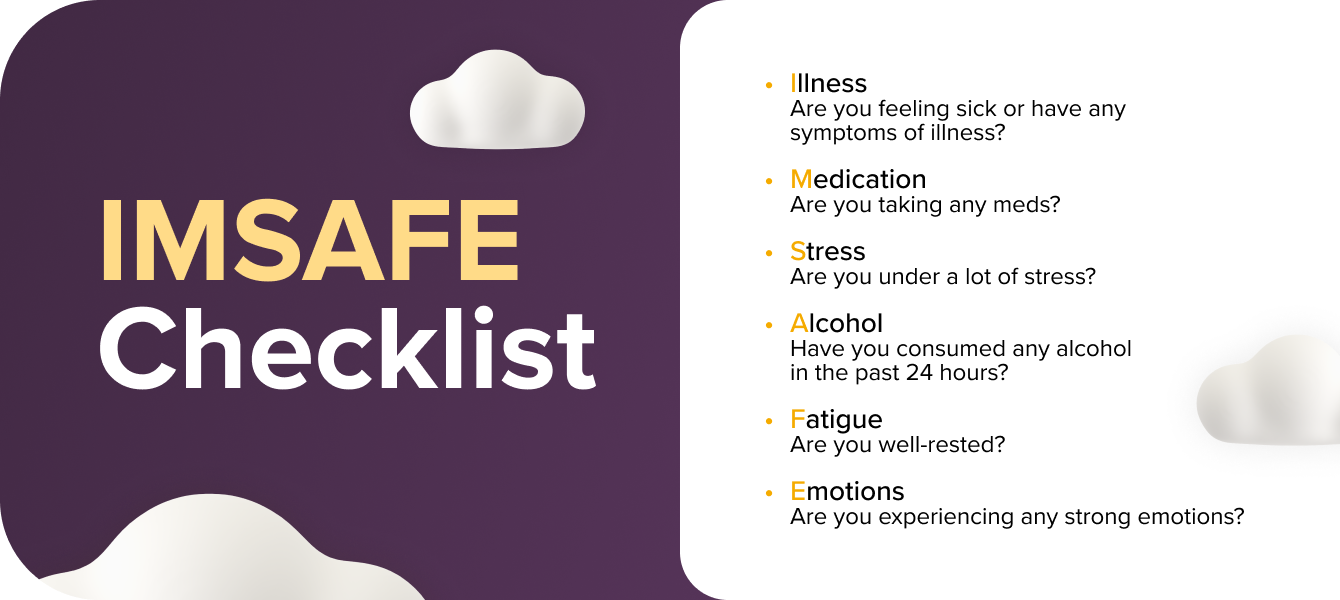
4. Master the Landing Before You Take-Off
Just as confident landings are crucial for pilots, having a strong foundation is essential for achieving any goal. Before taking on ambitious projects, focus on mastering the basics and developing the skills you need for a successful journey.
5. Avoid Unnecessary Risks
Pilots learn to avoid clouds during visual flights because they can hide hazards. Similarly, in life, there may be situations that limit your visibility and hinder your ability to make clear decisions. Learn to identify these situations and navigate around them to avoid unnecessary risks.
6. Embrace a Proactive Mindset
Pilots need to be constantly aware of their surroundings and anticipate upcoming manoeuvres. Develop a similar proactive mindset in life. Plan, anticipate challenges, and take control of your decisions. This will help you navigate life's inevitable ups and downs with greater ease.
Remember, these pilot principles are valuable tools not just for flying, but for soaring through life with confidence and a clear vision for the future.
Pilot Sayings Explained
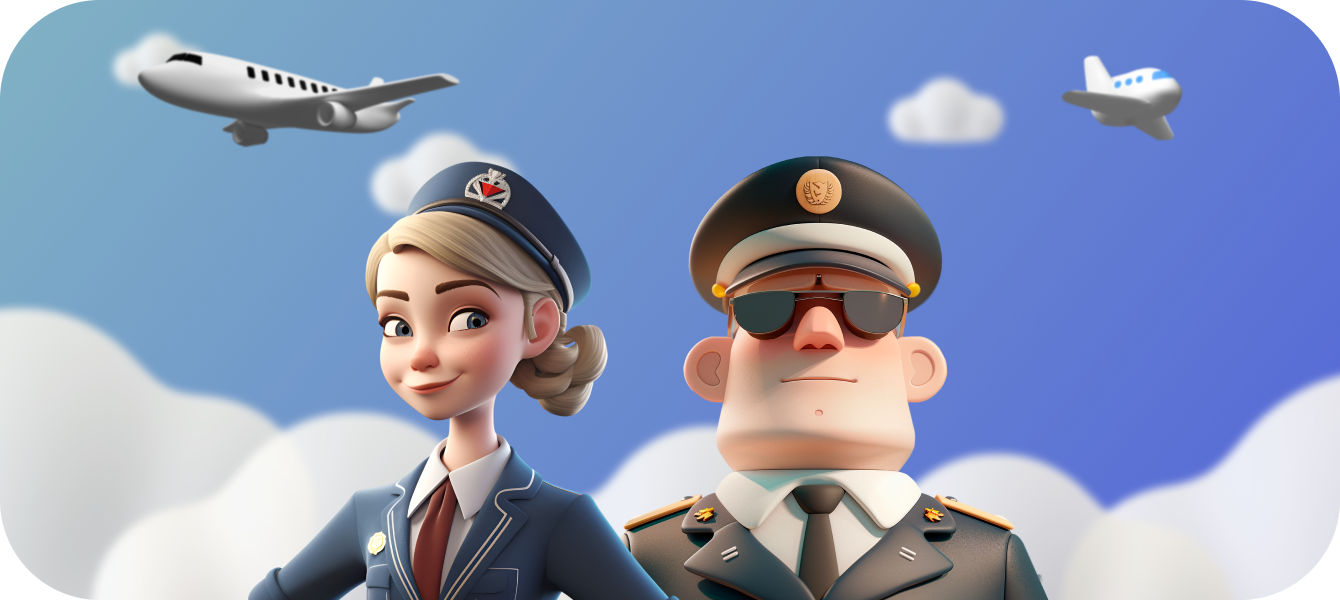
The world of aviation might seem like all seriousness and checklists, but seasoned pilots have a secret weapon – humour. They've developed a unique culture that uses wit and playful sarcasm to convey crucial safety messages and practical knowledge. Don't mistake these sayings for a definitive rulebook – they're more like bite-sized lessons wrapped in a layer of dark humour or playful sarcasm. But in a way, these sayings act as a kind of unofficial code of conduct, reminding pilots of the unwritten rules that contribute to a smooth and safe flight for everyone on board.
Let's delve into some of these classic pilot sayings.
Every take-off is optional. Every landing is mandatory. This proverb points to the pilot's responsibility for a safe conclusion to the flight. While take-offs involve a decision to initiate flight, landings are non-negotiable. It's a reminder to prioritize safe landings even in challenging situations.
If you push the stick forward, the houses get bigger. If you pull the stick back, they get smaller. That is, unless you keep pulling the stick back, then they get bigger again. It is a simple analogy to explain aircraft pitch control. Pushing the control stick forward lowers the nose of the aircraft, causing you to descend (houses appear larger). Pulling back increases the angle of attack, making you climb (houses appear smaller). However, pulling up too sharply can stall the wings, leading to a loss of lift and an unintended descent (houses get bigger again).
It's always better to be down here wishing you were up there than up there wishing you were down here. This saying underscores the importance of choosing safety over ambition. A safe landing on the ground, even if it means cancelling a flight, is preferable to a risky situation in the air.

When in doubt, hold on to your altitude. This one offers a clear principle for pilots facing uncertainty. Maintaining your current altitude gives you time to assess the situation and make a well-informed decision, rather than potentially putting yourself in a more dangerous situation by manoeuvring without a clear plan.
A 'good' landing is one from which you can walk away. A 'great' landing is one after which they can use the plane again. This saying injects a bit of humour into the concept of a successful landing.
Learn from the mistakes of others. You won't live long enough to make all of them yourself. This saying highlights the importance of aviation safety culture. By studying past accidents and incidents, pilots can identify common pitfalls and avoid making the same mistakes themselves.
Never let an aircraft take you somewhere your brain didn't get to five minutes earlier. This saying points to the importance of thorough pre-flight planning. Pilots should be mentally prepared for the flight path, weather conditions, and potential emergencies before taking off.
There are three simple rules for making a smooth landing. Unfortunately, no one knows what they are. While there are fundamental principles for landing an aircraft, achieving a perfectly smooth touchdown requires skill, practice, and adapting to various conditions.
You start with a bag full of luck and an empty bag of experience. The trick is to fill the bag of experience before you empty the bag of luck. This saying captures the importance of experience in aviation. Even with a bit of beginner's luck, building a strong foundation of knowledge and flight time is crucial for long-term safety and success.
It's always a good idea to keep the pointy end going forward as much as possible. This humorous saying serves as a reminder to maintain proper aircraft attitude during flight. The "pointy end" refers to the nose of the aircraft, and keeping it pointed in the desired direction is essential for safe and controlled flight.
Keep looking around. There's always something you've missed. This saying is all about the importance of continuous vigilance during flight. Pilots should maintain situational awareness by scanning their instruments and visually checking the outside environment for potential hazards like other aircraft or weather changes.
The Final Takeaway
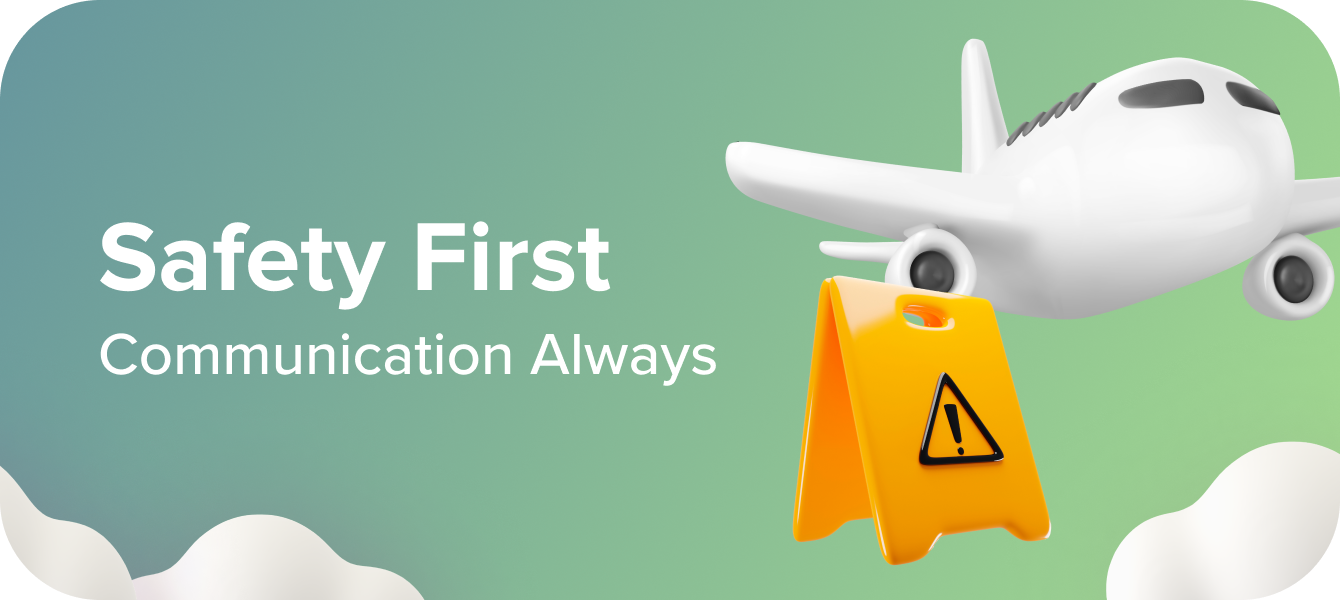
This article wasn't just about collecting unwritten rules in one place. Airhead empowers you to navigate the skies with confidence. Remember, while regulations are the foundation for safety, pilot etiquette is the secret language that keeps things smooth and respectful up there. Here's the key takeaway: Safety First, Communication Always.
Even the most detailed rulebook can't predict every situation. By prioritizing safety and fostering open communication with Air Traffic Control and fellow pilots, you become an active participant in creating a harmonious and conflict-free flying environment. It's not just about following the rules – it's about understanding the spirit of aviation cooperation.







